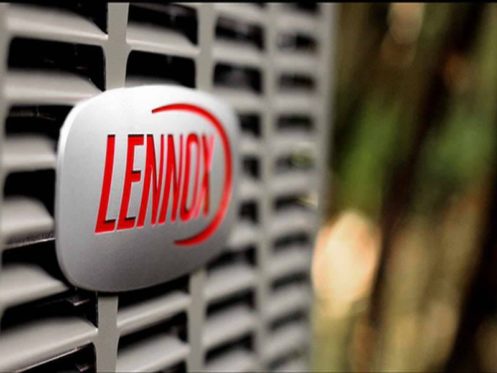Summers around Las Vegas can get hot, and the winter evenings get cool enough to need some heat support. Whether you use separate furnace and air conditioning systems or an efficient heat pump, it’s important to get equipment of the right size for your property. The team from Sierra Air Conditioning & Plumbing has assembled some tips for choosing the best size for your home. Here’s a hint: it’s not just about the number of square feet in your space.
What Does HVAC Size Refer To?
When talking about HVAC appliances, size has nothing to do with how much space the unit takes up. Rather, it is all about how much heat the unit can move. Moving heat can be accomplished by generating it, as in the case of the furnace, or by transference, as in the case of an air conditioner or a heat pump.
Heat capacity is measured in British Thermal Units, or BTUs. One BTU is the amount of energy needed to increase the heat of one pound of water by one degree Fahrenheit. When considering the size of an HVAC appliance, the BTUs measure how much heat the system is capable of adding to your space or removing from it.
Why Is Size So Important?
It’s important to get a unit that’s properly sized for your home. You likely won’t find a unit that will match exactly what you need, so there’s a little flexibility, and you should go a bit beyond what you need. It’s safe to exceed your needed capacity by about 15% for air conditioners, 40% for furnaces or 25% for heat pumps.
Going larger than this will cause the unit to shut down prematurely, failing to properly condition your home. This will then cause your equipment to run more frequently, significantly increasing the operational strain on your system. This added strain leads to higher utility bills, more repairs and a shortened service life.
Likewise, going smaller than your home’s requirements will make your system run longer cycles. While this may not cause the significant strain provoked by constantly starting and stopping, it still adds unnecessary stress.
The amount you’ll pay out in increased utility expenses makes it worth taking the time to get a unit of the right size. Let’s consider everything involved in determining what size is appropriate for your home.
Method Used by HVAC Professionals
Rather than going through and tediously determining what size is needed for your home, they rely on the Manual J HVAC calculation. While they could do this manually, most professionals have a handy calculator that takes in all the variables to determine the appropriate size.
In any calculation, you’ll start with square footage. From there, it’s important to consider factors that affect the air temperature in your home. Here’s what’s involved and why each factor important.
Start With Square Feet
The foundation for sizing any HVAC unit is determining the square feet serviced by your unit. A simple method for determining this is to measure the outside of your home and multiply the length by the width. This works neatly if your home is rectangular or square.
Alternatively, you can go through your home, room by room, and add up the square footage. This will yield a far more accurate picture of your serviceable space, especially if your garage is attached to your residence.
When going through your home, be sure to account for often-ignored spaces. These may include halls, stairwells, closets and pantries or even basements and garages if the heat is ducted into them. Even if you don’t commonly use a space, if it’s ducted into your system, be sure to account for it when sizing that system.
Climate Zone Considerations
Once you have your home’s size, it’s time to make the conversion to BTUs. Where you’re located in the country determines the conversion rate involved. Las Vegas is in Climate Zone 3, which requires 40-45 BTUs per square foot.
Outside the Las Vegas area, the rest of Nevada is in Climate Zone 5, which needs 50-60 BTUs per square foot. Make sure the technician you’re working with is taking into account the correct climate zone for your area.
How Is Your Home Constructed?
Once you’ve accounted for your home’s size and the climate zone it’s in, you need to consider the specifics of your home’s construction. First, you’ll need to consider the height of your ceilings and the number and size of your windows.
You’ll also need to consider the condition and amount of your insulation. Without the correct insulation, your system will run cycles more often as heat transfers outside.
Finally, you’ll need to consider your home’s ducts. If they aren’t sealed and insulated, you’ll need a larger capacity system to get the right amount of heat throughout your home.
How Many Occupants Do You Have?
Every living creature generates heat and, therefore, affects how your HVAC system heats and cools your home. When sizing your unit, you’ll want to consider how many occupants you have in it and how often they’re there.
For instance, there may be only three people who reside in your home, but you have frequent gatherings that last for several hours. In this case, you may want to consider a slightly larger air conditioner.
Heat-Generating Appliances
In addition to occupants, your heat-generating appliances are an important factor. Do you have a larger stove that you frequently use? Do you have numerous dehumidifiers throughout your home that generate additional heat? Multiple refrigerators or freezers throughout your home may also add heat that needs consideration. Your installer will help you evaluate other devices that may contribute additional heat.
Environmental Considerations
There are also various environmental factors to consider as you evaluate your HVAC system size. Does your home get a lot of shade during the day, or is it unshaded? Do you live in an area that’s prone to wind? Is your landscaping more rock and concrete or live vegetation? All of these can cause your home to either absorb or disperse additional heat, affecting the capacity you require from your system.
HVAC System Efficiency
Finally, the specific system you’re looking at may influence the capacity as well. For instance, furnace efficiency considers how much heat the unit generates versus how much actually enters your home. So, if the unit you’re considering has a 97% AFUE rating, then only 3% is lost through the exhaust.
If you have a lower AFUE-rated system, then you’ll need a higher capacity to produce the amount of heat required. For instance, a 100,000 BTU unit that has only 80% efficiency delivers only 80,000 BTUs to your home. If your need is 100,000 BTUs, then your system is undersized, failing to deliver 20% of what’s required.
Once your installer has all the other factors considered, they’ll work with you to look at unit options. A higher-efficiency unit will allow you to go with a lower capacity. Overall, it’s a matter of whether you want to pay for the additional efficiency now or the extra utility costs down the road.
The technicians at Sierra Air Conditioning & Plumbing have kept residents of Las Vegas comfortable in their homes since 1987. Our award-winning team provides heating and air conditioning repairs, maintenance and installation as well as indoor air quality and water quality solutions. Call today to schedule your consultation with one of our experts.





